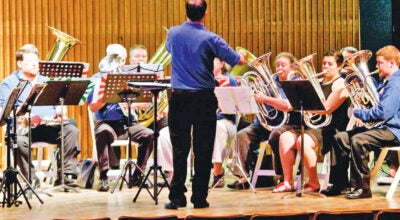Last shot of Civil War fired in Texas
Published 12:00 am Sunday, August 7, 2011
Not Appomattox Court House. Not Blakely, Alabama. Since the fall of 1864, a Federal army had been on duty at the mouth of the Rio Grande River in Texas.
It possessed a very small blockading force and just under a 1,000-man army. They occupied the island called Brazos Santiago. No sailor or soldier would want to be there surrounded by sand dunes. Forces in that part of Texas knew the Confederacy was about to fall.
Union officers tried to negotiate a peace as early as March. An agreed-upon truce saw meetings and negotiations between the Union army and two Confederate leaders.
Three officers sought to draw up a suitable surrender document. A superior officer of the two Confederate leaders soundly rejected such “surrender talk.”
However, despite the failure, both armies along the Rio Grande River planned to maintain the “peaceful co-existence” there.
During the early months of 1865, the commanding officer at Brazos Santiago heard that the Southerners at Brownsville, Texas, some 20 miles to the southwest, were deserting. It was the belief of Union leaders at Brazos Santiago that Brownsville could be taken rather easily.
The Union officer in command at Brazos Santiago was Colonel Theodore H. Barrett. His reasons for breaking the “peaceful co-existence” in May of 1865 are still unclear to this day.
It is known that Barrett had hoped to build a more impressive war record, possibly for a political career. Barrett had no cavalry or artillery, just infantrymen.
At 6 a.m., on May 12, 1865, a Union army moved west toward Palmito Ranch, a depot for Confederate supplies.
Mexicans in this area were quite sympathetic to the Southerners and passed on a warning. The clash on May 12, 1865, saw the Confederates pushed back toward Brownsville.
The Union army halted to feed and rest what horses they had. Reports had been sent back to Colonel Barrett and he sent reinforcements at 1:00 a.m., on May 13, 1865. After starting to prepare breakfast, the Union army headed toward a memorable clash.
A Southern courier reported to Colonel John S. “Rip” Ford that the Yankees were advancing. Ford was angry that Barrett had broken the “peaceful co-existence” along the river.
Ford’s superior suggested that the Rebels retreat and Ford vowed to fight the Union force on May 13, 1865. He left without his superior officer.
Colonel John S. “Rip” Ford arrived for battle at 3:00 p.m. on May 13, 1865. He would face a mixed force of Union soldiers. Company “F” of the 62nd U.S.C.T. was leading the Union army.
These were United States Colored Troops. Ford had artillery and cavalry; the Union had none. As Company “F” of the 62nd U.S.C.T. had led the march, it now formed the rear guard to protect trapped Union soldiers.
The Negro soldiers saved Barrett’s army. Colonel Ford pursued the withdrawing Union army for seven miles, but Ford’s artillery horses were too worn-out. The Union army found itself just two miles from Brazos Island. Ford stopped the pursuit at the very tip of Texas.
This Battle of Palmito Ranch, Texas, was called “the last actual conflict between hostile forces in the Great Rebellion.” Only one Union soldier supposedly died during this last battle. Private John J. Williams may have been the last Union soldier killed in the Civil War.
A Union surgeon stated: “Colonel Barrett, to say the least, showed no ability as a brigade commander.” As the Confederates, fearing Union reinforcements, stopped the pursuit, a U.S. warship shelled them.
An unknown 17-year-old Texas boy shot his rifle at an exploded shell from the Yankee ship.
The last shot of the Civil War had been fired, followed by the boy’s profane assessment of the exploded shell.
Bob Leith is a history professor at Ohio University Southern.




